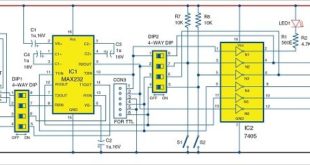What are the opportunities and challenges that leading PCB manufacturers should be ready for, with the arrival of 5G? To figure that out, Rahul Chopra of Electronics For You spoke with Erich Schlaffer, project leader – Research and Development, AT&S, Austria.
Q. Why is there a need to relook at manufacturing processes and technologies for 5G products?
A. PCB manufacturers must distinguish between sub-6GHz and 5G mmWave (above 28GHz). There is no big impact on the PCB manufacturing process in the sub-6GHz range. But at frequencies above 28GHz, impact of losses generated by the PCB and signal integrity must be addressed by new materials and processes.
PCB manufacturers will have to put in a lot of effort to reduce signal losses and interference, for example, by optimising the dielectric layer with respect to the material (low dielectric constant) or thickness, material transition (interfaces) or copper roughness.
With copper, the major challenge is that while smoother copper offers advantages for high-frequency (HF) applications, somewhat greater roughness improves the adhesion of PCB traces on the basic material.
For this reason, AT&S conducted an extensive study of commercially-available copper foils for HF applications.
Geometry (profile) of the tracks also affects signal delays at higher frequencies and must be optimised.
In addition, we investigated the effects between different metals (copper, gold and nickel) on the skin effect in GHz range, and are developing new surface materials accordingly to get optimised results.
Q. What are the problems manufacturers will face if they do not adopt new processes?
A. Established processes and materials will not fulfil the needs of high frequencies related to 5G standard. So there must be a technology and paradigm change on the side of component vendors and PCB manufacturers.
Q. Will there be a requirement to rethink design for manufacturing principles, too?
A. Yes, there will a huge impact on design models! The new mobile communication standard needs reduced footprint for related designs. Also, low power consumption, higher diversification and more complexity will drive 5G applications and PCBs.
Design of RF antenna and digital logic cannot be connected by cables anymore. New and highly-integrated connection technologies are needed. At the end, all-in-one packages and module solutions are required.
For 5G applications, a hybrid PCB structure combining high-speed layers (RF-optimised) and standard layers may offer a performance and cost-optimised solution.
Q. What changes are required in manufacturing processes for the 5G wave?
A. Structuring-related processes need a new mindset. For higher frequencies, a key priority is to avoid roughness of copper layers. Plus, simulation skills need to be considered to support design for manufacturing.
Q. Will there be a need to reskill (train) the manufacturing team, too?
A. Yes! New processes and handling of new materials need skilled operators. Data preparation, increased simulation and measurement tasks, in addition to handling of new and sensitive production steps need well-trained manufacturing teams.
Q.Will there be a need to upgrade or buy new type of manufacturing equipment?
A. Yes, to both the questions! We need to upgrade existing machines to fulfil the increasing RF requirements. Also, new processes, simulation and measurement equipment are needed to close the gap between a digital logic PCB and a high-speed 5G one.
Q.What kind of businesses will see the highest requirement for 5G high-speed PCBs?
A. The 5G market will provide significant growth opportunities over the next few years, spread across infrastructure, devices and services. 5G-enabled digitalisation revenues will show growth rates of more than 20 per cent until 2026, and will cover markets such as mobile communication, automotive, retail, media, agriculture, public transport and financial services. Both infrastructure and end-user devices will need powerful PCBs.
Q. From a PCB perspective, what changes will this shift drive?
A. PCB manufacturers will have to develop solutions in advance to support this dynamic and expanding market.
This content was originally published here.








